EPISODE 3: Healthcare Resiliency – Lessons from the Front Lines, Part 1, featuring Will Shrank, Humana
“As we continue to collectively establish the right measurements and incentives around promoting equity, this will help foster partnerships with providers to take a much more holistic view about how to manage the health of the patients they serve,” — Will Shrank, MD, Chief Medical Officer at Humana.
Host Mark McClellan, MD, Ph.D., Professor of Business, Medicine, and Policy and founding Director of the Duke-Margolis Center for Health Policy at Duke University and LAN CEO Forum Co-chair, interviews Will Shrank, MD, Chief Medical Officer at Humana, and LAN Care Transformation Forum Co-chair. In this episode, Will shares how Humana is responding to the COVID-19 pandemic, eliminating barriers to telehealth, and how healthcare is evolving to address equity, access, and inclusion. This is part one of a three-part series featuring the LAN’s Executive Forum Co-chairs on lessons learned from the front lines of a public health emergency and how to apply these lessons to pave paths for health equity and payment reform.
Episode Q & A
(02:14): Can you talk a little bit about some of the actions that Humana took in the short-term during the public health emergency to help create resilience?
Will Shrank:
I think first of all, I’d say that we did a lot at Humana, but I’ve been so impressed and proud to see how the insurance industry in general, and the healthcare sector in general, partnered so deeply and selflessly throughout the course of this pandemic to figure out how together we can meet the needs, the very personal needs of our members and patients. It was very, clear to us at the outset of the pandemic, as we were reaching out to our members, as we generally do, to ask them about their chronic conditions and their healthcare concerns. It was just really clear that folks were having new problems, different kinds of challenges, day-to-day challenges that really emerged from their social context. And it forced us within a relatively short amount of time to really transform the way we collect information and [how] we provide outreach to our high-risk members from focusing on their conditions and managing their conditions to really understanding the uncertainty of the pandemic and how we can help them.
And over the course of the pandemic, we conducted over 6 million screenings around health-related social needs, provided over a million meals, addressed issues ranging from housing insecurity and transportation issues to really core issues like social isolation and loneliness.
At the same time, we partner deeply with providers in new ways and our value-based providers we offered considerable amounts of advances in terms of their equality bonuses and their surplus bonuses in order to keep them whole, for those that weren’t capitated and more prepaid. And we reduced a whole host of administrative barriers to credit, make sure that there were less concerns about capacity, whether it’s access to subacute nursing facilities or the like. We spent a lot of time figuring out how to get more care to the home, and whether it’s providing screenings in the home, whether it’s providing care in the home, that was a large priority. And we worked closely with CMS, who gave us a great deal of latitude with- the waivers.
We eliminated all barriers to telehealth. We offered telehealth services with no cost-sharing to make sure that our members could get access to the care they need from the comfort and safety of their own homes. And in addition to things like not charging any copays for testing or for treatment of COVID. And then we really engaged around the time of the vaccine, and we continue to try to understand the very personal barriers that individuals face and to try to make sure that we’re providing both education, transportation, engagement, information to encourage our members, and particularly those that are in socially vulnerable areas, to get vaccinated. It’s been a very fulsome kind of a year and a half where we tried everything. We know that with a great deal of humility, we haven’t done it all right. We’ve learned from our colleagues, we hope we’ve shared with our colleagues across the industry and across the sector. And we continue to be eager participants to try to manage this.
(7:54) You found that some of the healthcare organizations that were already going down this road of value-based care, moving away from fee-for-service, had a somewhat easier time in some ways of making these adaptations on the fly in this public health emergency. Could you expand on that?
It was actually, in a lot of ways, really reassuring to see. Our providers, particularly those that were prepaid, who are responsible for the total cost of care of our members were unbelievably flexible and nimble. In part, because they were less concerned about sort of their day-to-day revenue. Their revenue was assured, so there was less concern about their resilience. However, in producing the clinical transformation that’s necessary to be successful in total cost of care models, those providers were just much better positioned to deliver the care that our members, their patients, needed. Whether it was providing more continuous and frequent outreach to manage chronic conditions, whether it was flipping almost with incredible speed to the use of telehealth. It was really focusing on those social and sort of personal challenges that their patients were experiencing.
Those providers were in a much better position to help. It’s interesting that you would expect at a time where fee-for-service providers would be trying to supplement their revenue, we offer telehealth at full charge. We would have expected that fee-for-service doctors would be much more rapidly adopting telehealth in order to substitute for the in-person visits, but that’s not at all what we found. We found that value-based providers were much faster at adopting telehealth over the course of the pandemic, and it was sustained considerably longer than in fee-for-service arrangements. And it just speaks to the fact that it’s an orientation, it’s a focus on the whole patient, and it’s a clinical transformation model that allowed those providers to deliver a different level of care.
(10:57) It's one thing to have a telehealth visit with a patient, it's another thing to make an effective home-based care model work. Everything from infections to emergency room visits, serious depression, etc. were related to things going on beyond healthcare. You mentioned transportation and isolation for example, it sounds like that was your experience too.
Will Shrank:
This is one of these unique perturbations that forces us to take a step back and really understand the drivers of health, and the true, very personal barriers that patients, members, beneficiaries face. I think we’ve learned a lot over the course of this year and a half about what it takes to keep people healthy. It’s in these moments of uncertainty that we really accelerate our learning. The deeper integration of social care, the deep integration of behavioral health care, the need to better leverage care in the home and virtual care as a sort of an integrated part of care delivery. And to do that all in a model where the provider takes meaningful responsibility and ownership for the health of the population of patients they serve, that is the model that has clearly been most effective at managing the course throughout the course of the pandemic. And that’s the one that I think we’re seeing CMS sort of lean in on, and I think we, as an industry, are all going to lean in on.
(13:36) Do you get a sense that we can build on these steps in the short term to learn from them and make them take more widely and accelerate progress for the longer term, or has this just been a year of disruption and hopefully we can get back to reform later?
Will Shrank:
I know I share your perspective here that this is not a blip, then we’re going to go right back to where we were. I think that there is no way that we will ever look at care in the home and virtual care the same. That is now part of the conversation and it’s an expectation that that’s a consistent offering, and we’ve got a lot more patients. In particular, seniors have gotten comfortable with using technology and creating new kinds of relationships in terms of delivering care. You spoke in the introductory remarks about equity, the pandemic has really shined a very bright light not just these important drivers of health, but really how different populations within the US experience care and experience health outcomes very differently.
And we will not walk back in terms of recognizing equity as a primary goal of the healthcare system. As we foster and continue with the right measurement and the right incentives around promoting equity, that’s going to be another really important motivator for providers to take a much more holistic view about how to manage the health of the patients that they serve. There’s been sort of building momentum, building inevitability, but this seems to be another big piece that’s going to really help create more of a center of gravity for that momentum.
(17:00) Could you talk about some of the steps, Will? I know there been some really innovative programs that Humana, including taking a fresh look at ways of working with the federal government and state governments on public health initiatives like vaccination
Will Shrank:
I’d say Humana, but really, the industry in general. We got together as an insurance industry to understand how we could partner better to improve vaccination rates, but essentially to prophylax against the likelihood, which ended up happening that there would be considerable disparities and uptake of the vaccine. Over the course of the pandemic, we had seen the disparate impacts on people of color. We wanted to be really thoughtful about understanding who’s most socially vulnerable providing additional resources upfront to try to reduce the likelihood, to get pockets of the population that were under vaccinated and for whom there was much greater risk than other pockets where they were more vaccinated.
So what we did as an industry, we worked together to identify the 25% of communities with the highest social vulnerability index generated by the CDC that uses data about income and wealth in addition to ethnicity and race, transportation, other kinds of census level data to characterize vulnerability related to social conditions. In those quarter of communities, we provided a considerable amount of proactive outreach. We called members, we encouraged them to be vaccinated. We offered, essentially almost uniformly across the health plans, transportation and other resources to try to facilitate. Many of us created partnerships with providers. We’ve created partnerships with Walmart and Walgreens where they gave us the ability to actually schedule appointments.
Walmart, in particular, gave us the ability to schedule appointments into their clinics so that we could really end-to-end. Once we got a member on the phone that wanted to get vaccinated, we could schedule the appointment and provide the transportation and make sure that they did, in fact, get that vaccination. We focused those efforts in the most vulnerable neighborhoods. We started in vulnerable neighborhoods in Alabama and had really incredible positive feedback. Then spread that out to many states where we had relationships with retail pharmacies to try to foster the completion of those vaccinations. We worked with a variety of states, as you know, Mark, we wish we could do more, but work with states to try to understand what problems they’re solving and to figure out how to target and deliver.
Often, we brought in mobile units to actually deliver vaccinations. We set up vaccination clinics in partnership with local providers to try to really focus the delivery and the supply on where the need was greatest and it was generally in places with more social vulnerability. We’re still in the midst of this pandemic and there’s still a lot of people who haven’t been vaccinated. So clearly, we’re having this conversation. It’s not like we’ve got this solved. But we have really put together a pretty concerted effort to figure out how we can be part of this.
(23:03) Are a lot of things that you're doing, about the role of payment reform and value-based care for your providers that are shifting away from fee-for-service, that gives them more opportunity as well to reach out to those particular patients in need to help do whatever it takes to get those patients’ health risks addressed. Are those programs synergistic as you've implemented?
Will Shrank:
Absolutely. I think you’ve probably been the leading voice in saying that in the setting of this uncertainty, public and private partnerships are absolutely essential to bringing the right level of resources and the optimal expertise to bear at a really challenging time. So I do think that those partnerships with states, partnerships with the federal government, create sort of the foundation on which we have better data, better resources, better community outreach that really do support that the sort of laboratory to foster and improve on value-based care. That we have the right data, we have the right information, we have the right community supports to help providers meet the very personal needs that patients face. And in that setting, they can really think about their ownership and their accountability for the outcomes, to the patient, not just for delivering care.
(26:14) How do we build on this very special, very challenging moment we're in right now?
Will Shrank:
I just wanted to pile on one thing you just said, and then I’ll answer that question. You were hinting at how partnerships between private and public entities can support multi-payer activity. And that’s such a critical piece of this. As we do deepen public private partnerships, and we create greater alignment as payers and as federal agencies and state agencies around aligning these approaches to foster value-based care, a lot easier for providers to be successful in that environment. It’s very hard in a fragmented environment where there’s a whole host of different payment models that they’re dealing with. And it’s through these deeper partnerships that we can really accelerate and make it easier for providers and move faster. And I would say, in answer to your last question, a wise friend once said to me that you should never let a good crisis go to waste.
This has been an incredibly trying and exhausting and uncertain and really difficult time for so many of us, but we’ve learned a lot. We’ve made a lot of progress in areas that we never could have imagined. We never could have imagined getting to 90% telehealth visits in a matter of months would have been automatic. We never would have imagined our ability to rapidly put together models to deliver better care at home and offer services at home. We also have a much more humble, and honest and open appreciation for our failings in terms of what we need to do to be able to deliver more equitable care for all the people we take care of. This is absolutely the time for us to put our heads down and work even harder. Exactly the time for us to build on sort of these unanticipated gains to make sure that not only do we not lose them, but we take this momentum as an opportunity to get better. And I’m really optimistic, frankly. I think that we as an industry have all sort of started to wrap our heads around the idea that we can do better, and we can partner better, and we can align better. And I’m really excited. I think value-based care is going to be sort of the core theme to bring that through.



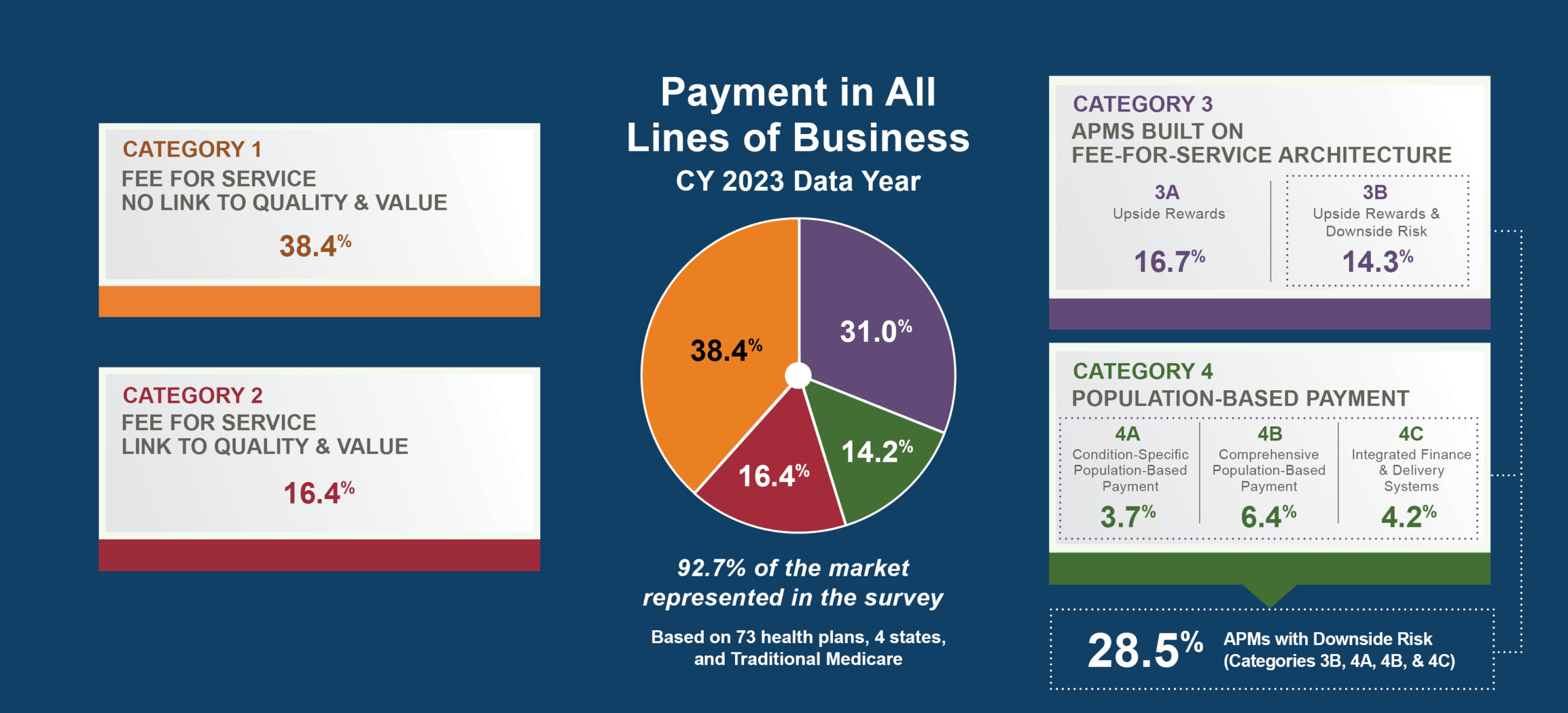
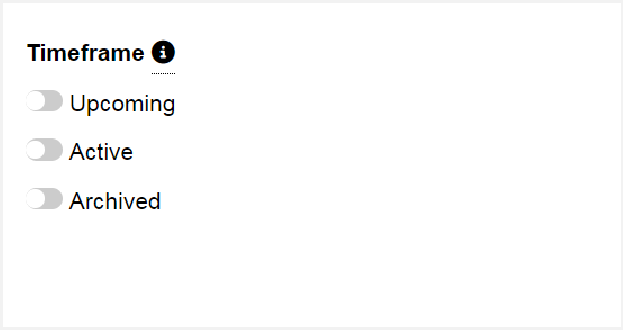
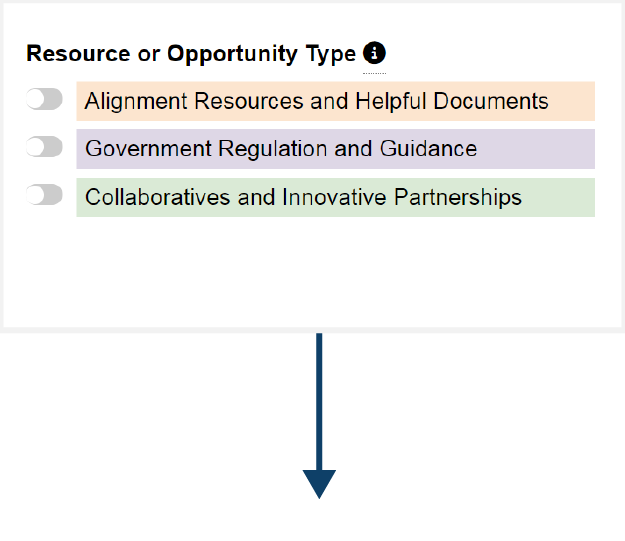
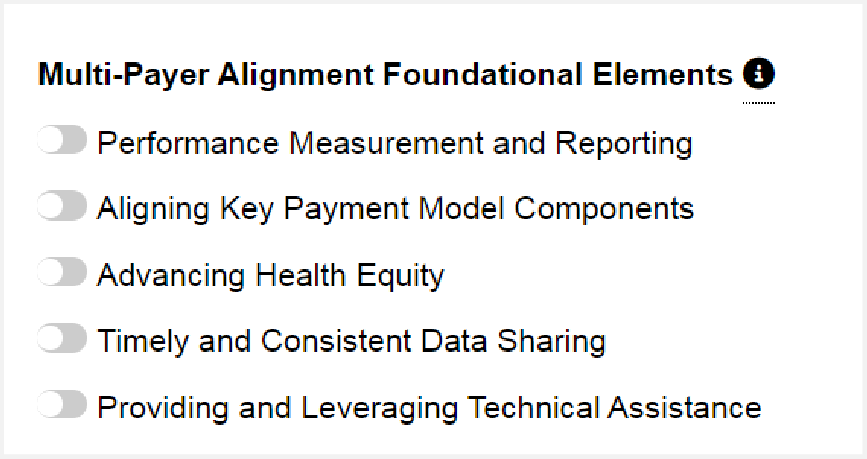




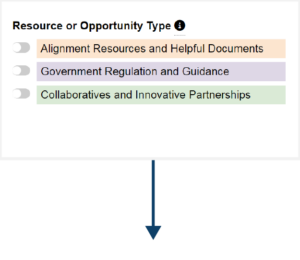

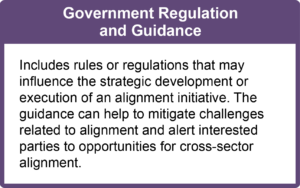
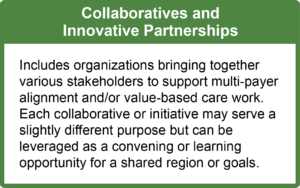
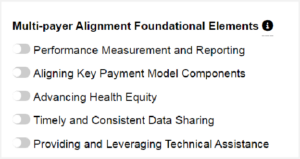




 Emily DuHamel Brower, M.B.A., is senior vice president of clinical integration and physician services for Trinity Health. Emphasizing clinical integration and payment model transformation, Ms. Brower provides strategic direction related to the evolving accountable healthcare environment with strong results. Her team is currently accountable for $10.4B of medical expense for 1.6M lives in Medicare Accountable Care Organizations (ACOs), Medicare Advantage, and Medicaid and Commercial Alternative Payment Models.
Emily DuHamel Brower, M.B.A., is senior vice president of clinical integration and physician services for Trinity Health. Emphasizing clinical integration and payment model transformation, Ms. Brower provides strategic direction related to the evolving accountable healthcare environment with strong results. Her team is currently accountable for $10.4B of medical expense for 1.6M lives in Medicare Accountable Care Organizations (ACOs), Medicare Advantage, and Medicaid and Commercial Alternative Payment Models. Mr. James Sinkoff is the Deputy Executive Officer and Chief Financial Officer for Sun River Health (formerly known as Hudson River HealthCare), and the Chief Executive Officer of Solutions 4 Community Health (S4CH); an MSO serving FQHCs and private physician practices.
Mr. James Sinkoff is the Deputy Executive Officer and Chief Financial Officer for Sun River Health (formerly known as Hudson River HealthCare), and the Chief Executive Officer of Solutions 4 Community Health (S4CH); an MSO serving FQHCs and private physician practices. Victor is the Chief Medical Officer for TennCare, Tennessee’s Medicaid Agency. At TennCare, Victor leads the medical office to ensure quality and effective delivery of medical, pharmacy, and dental services to its members. He also leads TennCare’s opioid epidemic strategy, social determinants of health, and practice transformation initiatives across the agency. Prior to joining TennCare, Victor worked at Evolent Health supporting value-based population health care delivery. In 2013, Victor served as a White House Fellow to the Secretary of Health and Human Services. Victor completed his Internal Medicine Residency at Emory University still practices clinically as an internist in the Veteran’s Affairs Health System.
Victor is the Chief Medical Officer for TennCare, Tennessee’s Medicaid Agency. At TennCare, Victor leads the medical office to ensure quality and effective delivery of medical, pharmacy, and dental services to its members. He also leads TennCare’s opioid epidemic strategy, social determinants of health, and practice transformation initiatives across the agency. Prior to joining TennCare, Victor worked at Evolent Health supporting value-based population health care delivery. In 2013, Victor served as a White House Fellow to the Secretary of Health and Human Services. Victor completed his Internal Medicine Residency at Emory University still practices clinically as an internist in the Veteran’s Affairs Health System. Dr. Brandon G. Wilson, DrPH, MHA (he, him, his) joined Community Catalyst as the Director of the Center for Consumer Engagement in Health Innovation, where he leads the Center in bringing the community’s experience to the forefront of health systems transformation and health reform efforts, in order to deliver better care, better value and better health for every community, particularly vulnerable and historically underserved populations. The Center works directly with community advocates around the country to increase the skills and power they have to establish an effective voice at all levels of the health care system. The Center collaborates with innovative health plans, hospitals and providers to incorporate communities and their lived experience into the design of systems of care. The Center also works with state and federal policymakers to spur change that makes the health system more responsive to communities. And it provides consulting services to health plans, provider groups and other health care organizations to help them create meaningful structures for engagement with their communities.
Dr. Brandon G. Wilson, DrPH, MHA (he, him, his) joined Community Catalyst as the Director of the Center for Consumer Engagement in Health Innovation, where he leads the Center in bringing the community’s experience to the forefront of health systems transformation and health reform efforts, in order to deliver better care, better value and better health for every community, particularly vulnerable and historically underserved populations. The Center works directly with community advocates around the country to increase the skills and power they have to establish an effective voice at all levels of the health care system. The Center collaborates with innovative health plans, hospitals and providers to incorporate communities and their lived experience into the design of systems of care. The Center also works with state and federal policymakers to spur change that makes the health system more responsive to communities. And it provides consulting services to health plans, provider groups and other health care organizations to help them create meaningful structures for engagement with their communities. Tamara Ward is the SVP of Insurance Business Operations at Oscar Health, where she leads the National Network Contracting Strategy and Market Expansion & Readiness. Prior to Oscar she served as VP of Managed Care & Network Operations at TriHealth in Southwest Ohio. With over 15 years of progressive health care experience, she has been instrumental driving collaborative payer provider strategies, improving insurance operations, and building high value networks through her various roles with UHC and other large provider health systems. Her breadth and depth of experience and interest-based approach has allowed her to have success solving some of the most complex issues our industry faces today. Tam is passionate about driving change for marginalized communities, developing Oscar’s Culturally Competent Care Program- reducing healthcare disparities and improving access for the underserved population. Tamara holds a B.A. from the University of Cincinnati’s and M.B.A from Miami University.
Tamara Ward is the SVP of Insurance Business Operations at Oscar Health, where she leads the National Network Contracting Strategy and Market Expansion & Readiness. Prior to Oscar she served as VP of Managed Care & Network Operations at TriHealth in Southwest Ohio. With over 15 years of progressive health care experience, she has been instrumental driving collaborative payer provider strategies, improving insurance operations, and building high value networks through her various roles with UHC and other large provider health systems. Her breadth and depth of experience and interest-based approach has allowed her to have success solving some of the most complex issues our industry faces today. Tam is passionate about driving change for marginalized communities, developing Oscar’s Culturally Competent Care Program- reducing healthcare disparities and improving access for the underserved population. Tamara holds a B.A. from the University of Cincinnati’s and M.B.A from Miami University.


 Dr. Peter Walsh joined the Colorado Department of Health Care Policy and Financing as the Chief Medical Officer on December 1, 2020. Prior to joining HCPF, Dr. Walsh served as a Hospital Field Representative/Surveyor at the Joint Commission, headquartered in Oakbrook Terrace, Illinois.
Dr. Peter Walsh joined the Colorado Department of Health Care Policy and Financing as the Chief Medical Officer on December 1, 2020. Prior to joining HCPF, Dr. Walsh served as a Hospital Field Representative/Surveyor at the Joint Commission, headquartered in Oakbrook Terrace, Illinois.








